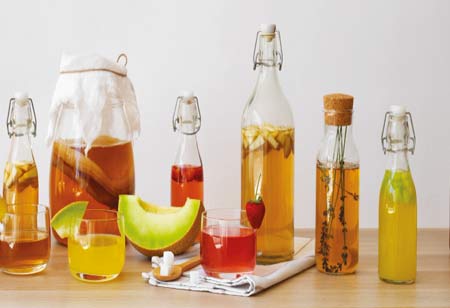Thank you for Subscribing to Food Business Review Weekly Brief
The Strategic Power of Colloid Science in Food Innovation
Liquid colloidal systems are revolutionising European food formulation, enabling precise control of texture and flavour, enhancing sensory experiences, and addressing consumer demands for healthier, sustainable choices.

By
Food Business Review | Friday, November 14, 2025
Stay ahead of the industry with exclusive feature stories on the top companies, expert insights and the latest news delivered straight to your inbox. Subscribe today.

At the heart of Europe’s culinary landscape, a quiet revolution is unfolding—not through new ingredients, but through the ingenious manipulation of matter at the microscopic level. The architects of this change are liquid colloidal systems, the invisible scaffolding that dictates the texture and taste of countless products on our shelves. From the velvety smoothness of a dairy-free dessert to the explosive burst of flavour in a functional beverage, these complex dispersions are empowering food scientists to engineer sensory experiences with unprecedented precision, redefining the very art of food formulation.
Understanding Liquid Colloidal Systems
At its essence, a liquid colloidal system is a mixture where minuscule particles of one substance are dispersed uniformly throughout another liquid. These particles, which can be solid, liquid, or gaseous, are larger than individual molecules but too small to be seen with the naked eye. The magic happens in the vast interfacial area between these dispersed particles and the continuous liquid phase. It is the intricate dance of forces at this interface—attraction, repulsion, and stabilisation—that food scientists now masterfully choreograph to build the desired structure and sensory profile of a food product. This level of control is moving food formulation from a culinary art to a sophisticated engineering discipline.
The Role of Colloidal Systems in Texture and Flavour
Colloidal systems play a central role in shaping the texture, or rheology—the science of flow and deformation—that defines consumer perception and enjoyment of food and beverages. Emulsions, stable mixtures of immiscible liquids such as oil and water, underpin a wide array of products, including sauces, dressings, and creams. Their creamy mouthfeel arises from finely dispersed oil droplets suspended in a water-based medium, with textural qualities tailored through precise control of droplet size and the choice of emulsifying agents. Smaller, more uniform droplets not only enhance opacity and whiteness but also create a richer, more lubricious sensation on the palate, a strategy especially valuable in low-fat formulations that aim to deliver indulgence without compromise. Similarly, foams—gas bubbles dispersed in liquid—contribute light, airy textures to mousses, whipped toppings, and even the frothy head of beer. Their stability depends on proteins or surface-active molecules that form protective films around bubbles, with bubble size distribution determining whether the result is delicately melt-in-the-mouth or more robust and effervescent. Gels form another cornerstone of textural engineering, where liquids are entrapped in a three-dimensional network of polysaccharides or proteins, yielding semi-solid systems with varying degrees of firmness, elasticity, and cohesiveness. Through careful selection of gelling agents and manipulation of factors such as concentration, pH, and temperature, textures can be tuned from soft and spreadable to firm and sliceable—or designed to melt at body temperature, releasing flavour and imparting a cooling sensation. Such versatility is particularly significant in the rapidly growing plant-based sector, where replicating the bite and chew of meat and dairy remains key to consumer acceptance.
Innovations in Flavour Delivery Through Encapsulation
Beyond the physical sensation of texture, liquid colloidal systems are playing an increasingly sophisticated role in modulating taste and flavour perception. The delivery of taste is no longer a passive process; it is an engineered event, designed to unfold in a specific sequence to maximise sensory impact.
This is achieved primarily through the technology of flavour encapsulation. Volatile and often delicate aroma compounds are encapsulated within microscopic colloidal carriers, such as emulsions or complex coacervates. This protective barrier shields the flavour molecules from degradation due to oxygen, light, or heat during processing and storage, ensuring that the product retains its intended flavour when it reaches the consumer.
More impressively, this encapsulation allows for controlled and triggered flavour release. The encapsulating material can be designed to break down and release its payload only when specific conditions are met. For example, a flavour can be locked within a carrier that ruptures under the mechanical shear forces generated during chewing, providing a sudden, intense burst of taste. Alternatively, the release can be triggered by the enzymes present in saliva or the change in temperature upon entering the mouth. This enables the creation of multi-sensory experiences where flavours evolve and layer over time, offering a more complex and engaging taste journey. This temporal control over flavour release is a powerful tool for creating signature taste profiles that distinguish a product in a crowded marketplace.
Colloidal systems offer a solution for taste masking. Many beneficial functional ingredients, such as vitamins, minerals, and plant-based proteins, can impart undesirable bitter or astringent notes. By encapsulating these compounds, their interaction with taste receptors on the tongue is blocked, effectively rendering their off-tastes imperceptible. This enables the creation of nutritionally enhanced foods that do not compromise between health benefits and taste.
The silent revolution, powered by liquid colloidal systems, is fundamentally reshaping the toolkit of European food formulators. By understanding and applying the principles of colloid science, the industry is moving beyond simply mixing ingredients to intelligently designing food structures from the ground up. This enables the creation of products that are not only delicious but also align with modern consumer demands for healthier, more sustainable, and diverse food choices. As this science continues to advance, the ability to engineer texture and taste will become increasingly refined, promising a future where food is more innovative, delightful, and perfectly tailored to sensory preferences than ever before.






